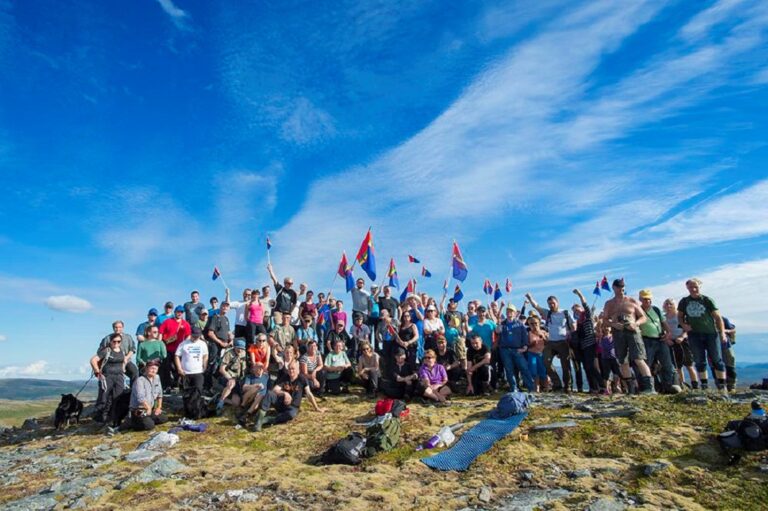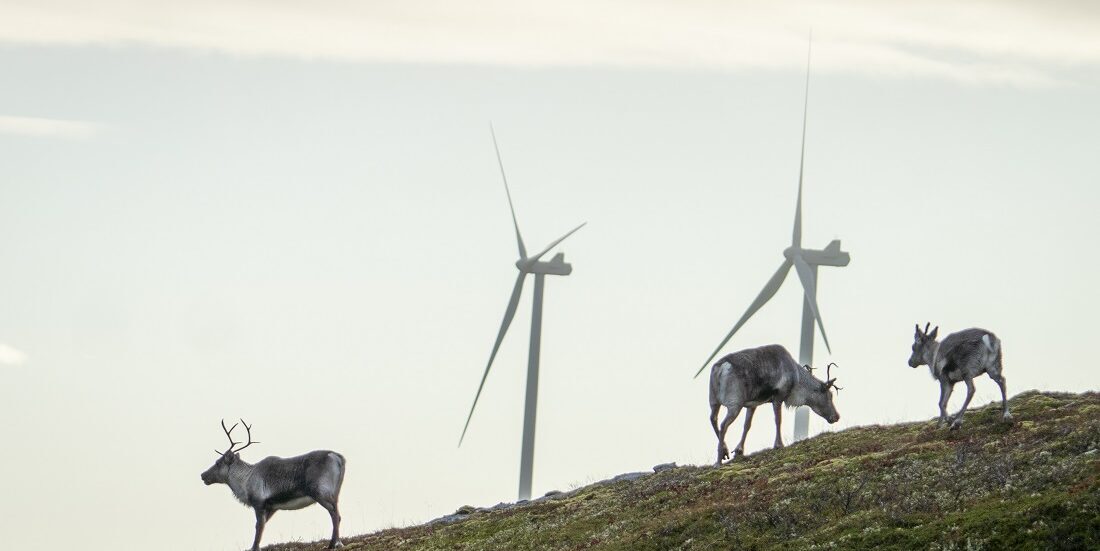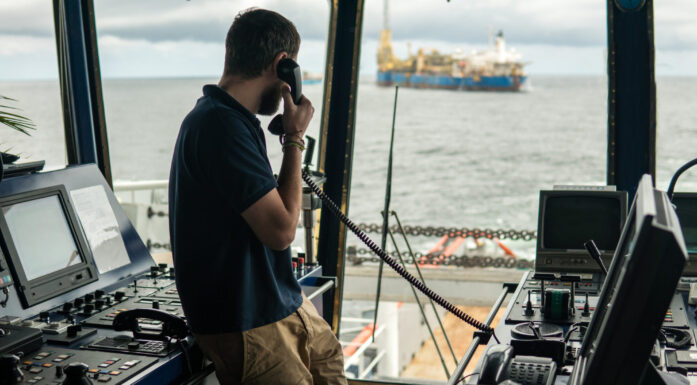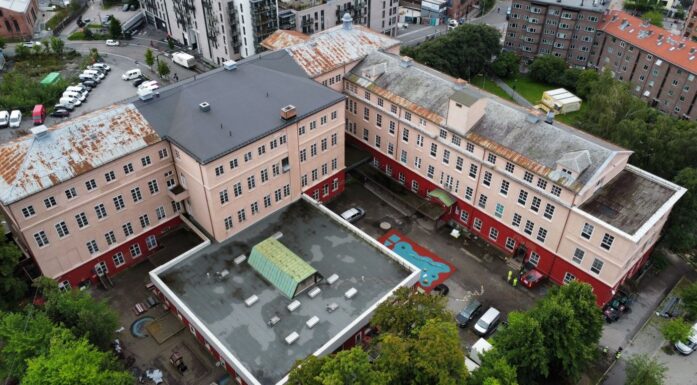Southern Sámi language in danger if reindeer herding is restricted
Wind turbines are contributing to the Southern Sámi losing grazing land for their reindeer husbandry. This livelihood is central to the identity of the Southern Sámi culture and thus to their language, researchers say.
The Sámi’s fight against the billion-dollar development in Roan and at Storheia in Trøndelag county won an important victory when the Supreme Court of Norway in 2021 determined the government’s concession for wind power development at Fosen to be invalid.
The Supreme Court ruled that the development was a violation of human rights and the Sámi’s right to their cultural practices. What will happen to the wind farm and the mountain area remains uncertain.
“This is a pattern that has been going on for generations, and it makes me wonder about the process. We’re talking about a small microgroup that gets stung. That upsets me,” says Trond Risto Nilssen, an NTNU researcher at the Department of Teacher Education.
Sámi National Day
- Sámi National Day is 6 February, the same day as Norway’s official flag day. Many events and symbols are connected to this date.
- The day marks the first Sámi congress, which was held in the Methodist Church in Trondheim in 1917. This was the first time that the Sámi had gathered across national borders to work on common Sámi issues.
- The day was first celebrated in 1993.
Threat for entire culture
Nilssen is one of the authors of the book The Indigenous Identity of the South Saami, which was published in 2019, two years before the remarkable Supreme Court verdict. In the book he writes about how the practice of reindeer herding for the Southern Sámi – “a minority within the minority” – is central to both the language and culture of the ethnic group.
“The construction of wind turbines in Southern Sámi lands raises issues of the greatest importance for the Southern Sámi as an ethnic group. This is about rights and about the Southern Sámi language. Furthermore, many Southern Sámi believe that reindeer herding is the most important carrier of their culture, such that threats to grazing areas are a threat to the entire culture,” Nilssen wrote.

Protesters at Storheia on the Fosen peninsula in Trøndelag county in 2018. Photo: Naturvernforbundet (Norwegian Society for the Conservation of Nature)
He maintains that the Southern Sámi identity is strongly linked to reindeer herding itself.
“We’re talking about a marginalized group under great pressure, where reindeer husbandry is an identity marker. Every area that is gobbled up by development thus takes on great importance.”
“An identity marker can be understood as something that is important for an individual’s understanding of him- or herself,” Nilssen said.
“Who are we, who is in the group we belong to? What are the characteristics of this community? Reindeer herding includes traditional knowledge and that’s one thing, but this also has linguistic aspects. This becomes apparent when older and younger Southern Sámi are interviewed,” Nilssen said.
Southern Sámi language is almost extinct
The Southern Sámi language has long been characterized as endangered and is described as a minority language even in the Sámi context. How many people speak Southern Sámi is uncertain, but it is assumed that fewer than a thousand people have mastery of the language. The difference between Southern Sámi and the much more widespread Northern Sámi is often described as being like the difference between Norwegian and Icelandic.
“Without reindeer herding, the Southern Sámi language wouldn’t exist today,” says linguist Inger Johansen.
Johansen is a senior lecturer at Nord University where her research includes Sámi language and culture. She says that the Southern Sámi language is now in the process of improving its position after almost being threatened with extinction. The language has been particularly vulnerable due to extensive assimilation among the Sámi in southern Norway. She notes that reindeer husbandry has served as a counterweight to assimilation.

From the demonstration against the development of Storheia wind farm on 17 April 2018. Photo: Naturvernforbundet
“The Sámi have always engaged in various types of industry, not just reindeer husbandry. On the coast, the Sámi have tended to combine farming and fishing in the same way as Norwegians, whereas reindeer herding has been more common in inland regions,” she said.
Reindeer husbandry has given the Sámi a livelihood that is unique to them and that they have managed independently.
Reindeer husbandry has thus played an extremely important role, especially in the Southern Sámi areas. It would be wrong to say that they’ve had the mountains to themselves, because reindeer herding has been regulated, and cabins and roads have been built, snowmobiles are a presence and windmills have been erected. But they have been left alone to practise their livelihood.
The further south in the country you go, the more the Sámi have been in the minority.
“The Sámi have assimilated to a greater extent in the south than in the north, and in coastal areas the Sámi have disappeared to a greater extent than in the mountains, where they have been able to exercise their livelihood more independently,” she said.
Winter grazing at Fosen
- Late winter grazing takes place from January to around Easter over a period of about 90 days.
- A prerequisite for an area to be used for late winter grazing is that it gives the reindeer access to lichen. Mountain areas above treeline, with higher-lying, wind-blown ridges lend themselves to this, but lichen availability varies according to the snow conditions in a given year.
- Only a small part of the total range referred to as late winter pasture is suitable for grazing by the reindeer.
- The turbines in the two wind power plants are located along the mountain ridges and are thus in areas that are well suited for late winter grazing.
(Source: Supreme Court of Norway, judgment 11 October 2021)
Tiny and invisible minority
On the Trøndelag coast, the Sámi language and culture have largely disappeared. Traces of the language can still be found in many place names or in anecdotes.
“The Sámi on the Trøndelag coast have been a tiny and invisible minority, and those who pursue reindeer herding at Fosen today have been completely overrun by society at large in the wind power case,” says Johansen.
What consequences will there be for the language if the Southern Sámi lose their reindeer husbandry ranges?
“I think the loss of grazing lands will have major consequences, even though the language today has more legs to stand on than just reindeer herding. Not that many years ago only a handful of public positions used Southern Sámi as the working language. Today there are so many positions that it’s impossible to fill them all. But there are still a lot of Southern Sámi children who aren’t receiving the education they’re entitled to, and we’re seeing that the language has been lost in many families,” Johansen says.
Johansen says the lack of resources continues to be a problem.
“The Southern Sámi population is scattered, and Sámi who don’t live in Snåsa or Røros, where there are Southern Sámi teachers, find that they have to go through a lengthy process to get adequate language teaching. Things look good on paper, but the reality is that there aren’t enough teaching aids and knowledge,” she said.
- You might also like: First film in Southern Sámi language wins prize
The Fosen judgment
In a judgment of 11 October 2021, the Supreme Court of Norway in grand chamber concluded that Norway had violated the country's obligations under international law towards the Sámi.
The violation consisted in the fact that the Norwegian Water Resources and Energy Directorate (NVE) and the Ministry of Petroleum and Energy had granted a licence for the construction of the Roan and Storheia wind power plants on the grazing lands of two reindeer herding communities at Fosen in Trøndelag.
The construction of the two power plants, which together are Norway's largest, was found to be in violation of the herding communities’ (siida's) rights under the UN Convention on Civil and Political Rights (ICCPR) art. 27.
(Source: Øyvind Ravna, Professor of Jurisprudence at UiT Norway's Arctic University: The Sámi Court after the Fosen judgment. Juridikas.no)
Commission requests an explanation
The two researchers are now looking forward to the Truth and Reconciliation Commission’s report, due to be released by 1 June 2023. The commission was set up by the Norwegian Parliament in 2018 to investigate injustices committed against the Sámi, Kven and Forest Finns as a result of the Norwegianization policy.
Dagfinn Høybråten, the commission’s chair, last autumn asked the Ministry of Petroleum and Energy (OED) to explain how the ministry plans to safeguard both the state’s ownership interests and the state’s human rights obligations in the Fosen case and in future land conflicts regarding industrial development in the reindeer herding district.
Høybråten told NRK earlier this year, “We’ve noted from the many inquiries that we’ve received for the commission, that a lot of people are worried about whether they can count on this Supreme Court judgment to actually have consequences.”

From the Storheia protest march in 2016, which was marked with several Sámi flags. Photo: Alette Sandvik
OED has announced that they will secure a solution to maintain the operation of the wind power plants, while simultaneously safeguarding the reindeer herding rights. Leif Arne Jåma in the Fosen reindeer herding district told the Norwegian Broadcasting Corporation (NRK) that the Sámi perceive the time the ministry is taking as a great burden, and that he fears they will be the last Sámi able to pursue reindeer husbandry as a livelihood in Fosen.
“The Southern Sámi must be guaranteed the possibility to preserve their culture and language,” says Nilssen.
“Preserving the culture and language requires having an active and lively cultural practice. My observation is that reindeer herding is very important for maintaining the Southern Sámi identity, including for Sámi who don’t engage in reindeer herding themselves,” Nilssen said.
Linguist Johansen also emphasizes the importance of reindeer husbandry to the culture.
“The Sámi language can’t survive independently of the rest of the culture and the Southern Sámi identity. Reindeer herding is very central as a culture and identity marker here. It’s critical for the entire Southern Sámi culture to make arrangements so that engaging in reindeer herding in the future will continue to be possible as well,” she says.





